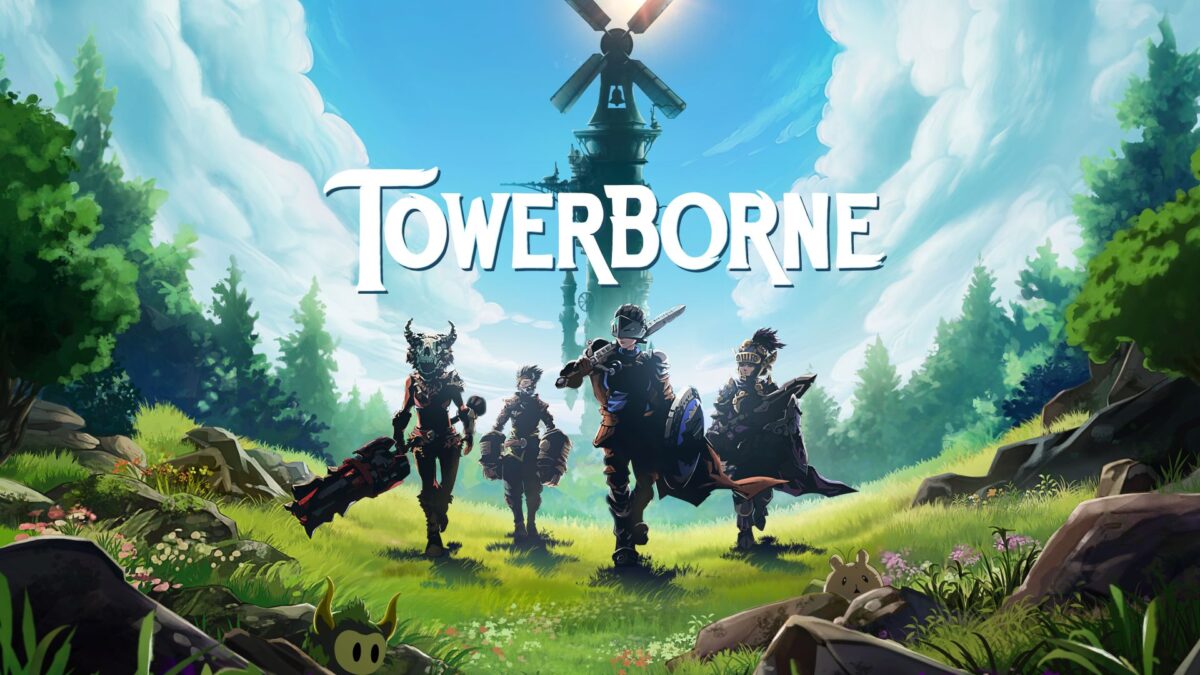Summary
- We speak to Arnie Jorgensen, Co-Founder and Chief Creative Officer at Stoic, about Towerborne, and players getting to experience the game in person for the first time.
- Towerborne is a brawler-style action role playing game (ARPG) that’s easy to learn, fun to master, and supports a single player and up to 4-player co-op experience.
- Coming to PC (Windows and Steam) and Xbox Series X|S in 2024, plus it will be available with Game Pass on day one.
For the first time since hearing the iconic “World Premiere” catchphrase at the Xbox Games Showcase earlier this year, thousands of fans attending this year’s gamescom will have a unique opportunity to experience Towerborne firsthand. Even though I won’t be attending the show in person, I was fortunate enough to get my hands on a build like what fans will be playing, and then chat with Arnie Jorgensen, Co-Founder and Chief Creative Officer at Stoic, about the game’s development and what players can expect.
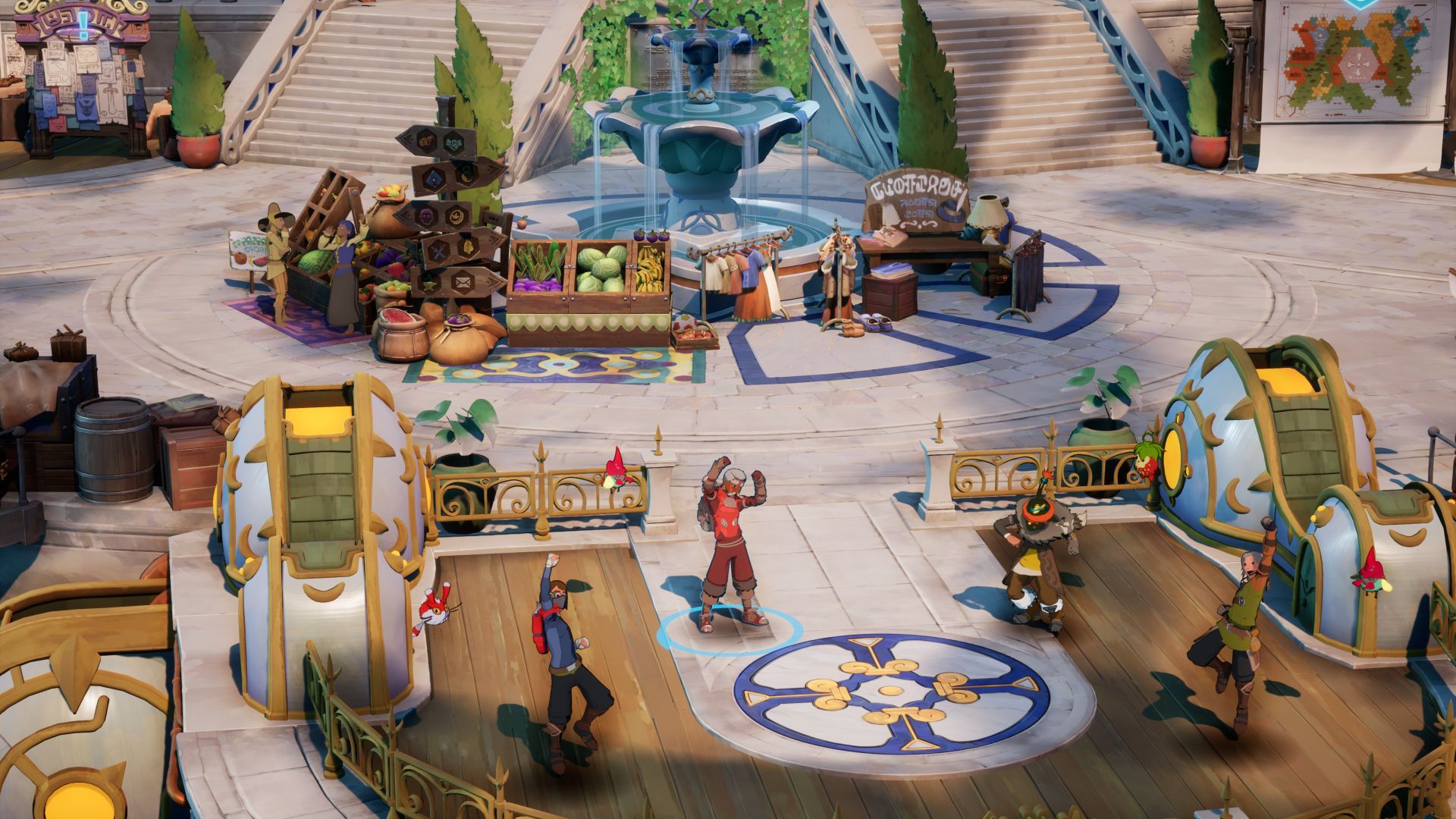
“Gamescom is giving us creative energy and we’re psyched for people to see what we’ve been working on. Players will be battling through a tight experience focused on defeating a titanic enemy who resides deep in the heart of an ancient mycelium forest. Weapon combos and abilities will be honed on the way to this boss by brawling with lesser denizens’ intent on defending their master,” Jorgensen says. “I hope players come away from this experience with a thrilling glimpse into the exciting combat and stunning world that Towerborne has to offer.”
I hope players come away from this experience with a thrilling glimpse into the exciting combat and stunning world that Towerborne has to offer.
Beacon of Hope
If you read a description of Towerborne, you will discover that, “The Belfry stands as a beacon of hope and safety amongst the ruins of humanity and the City of Numbers…” Ruins of humanity? That sounds a bit dark and foreboding, but the first thing I noticed about Towerborne is how beautiful the game is. Even with homes burning in the background and death lingering in the air, it’s bright and cheery atmosphere coupled with a delightful and uplifting music score that shifts in tempo depending on whether you’re in the safety of the Belfry or on the battlefield surrounded by enemies truly embodies this message of a beacon of hope. Instead of seeing a world in ruins, the audio and visual design of the game left me feeling optimistic for the City of Numbers.
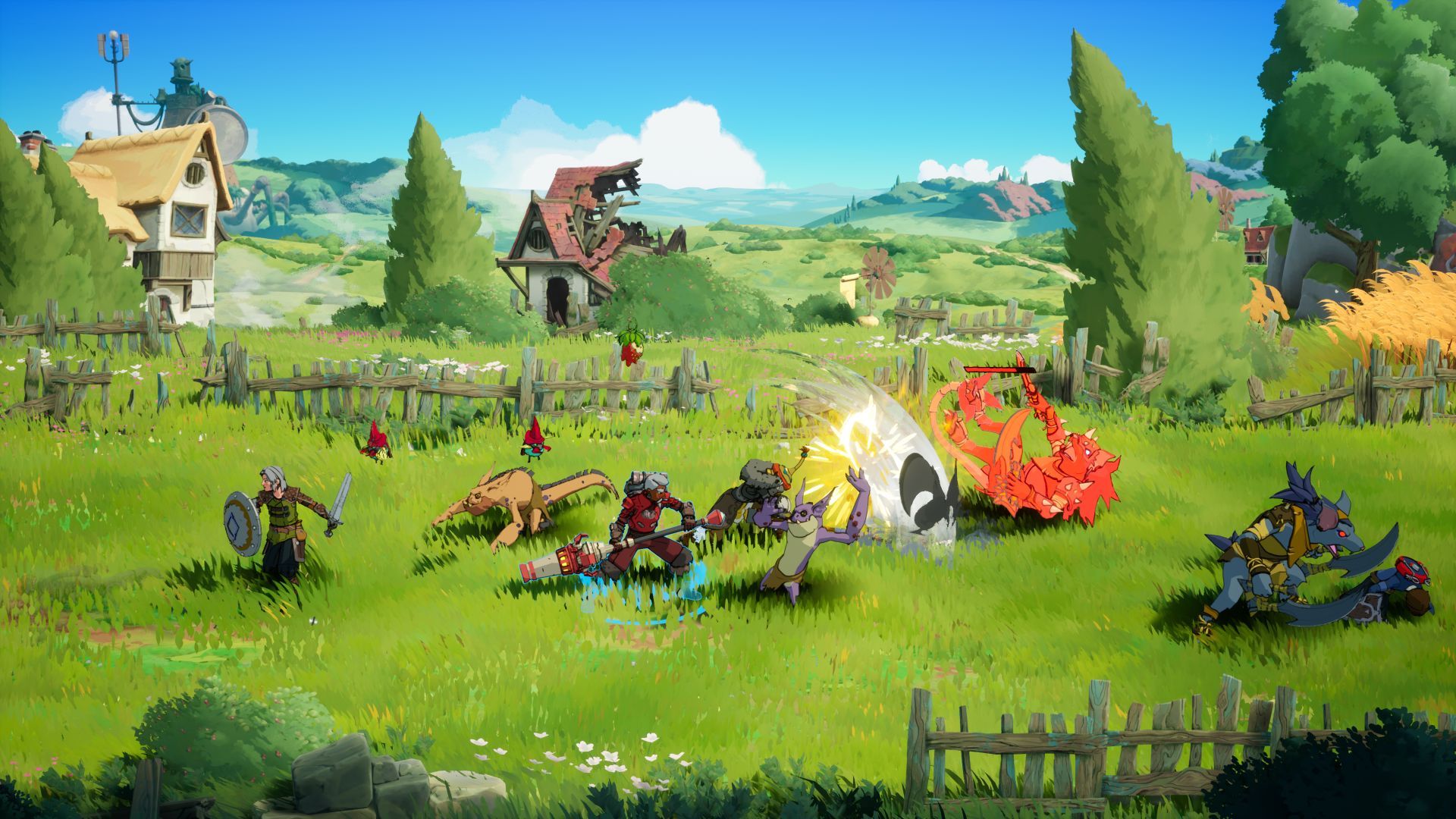
I asked Jorgensen about Towerborne’s creative style. “We began the art direction by leaning into what we’ve done previously on Banner Saga, meaning that Towerborne should look like you’re playing in a beautifully animated feature film,” explains Jorgensen. “Using Unreal Engine on this title has enabled us to go further and lean into a more updated and modern look, which suits the Towerborne worldbuilding perfectly. It’s simply better than anything I had hoped for in my mind at the start.”
Mash Buttons, Get Loot
Admittedly, I am terrible at games that force me to remember complicated combat maneuvers to chain combos together or pull off a flashy finishing move. But the joy of Towerborne’s combat design is you don’t have to be a pro to feel like one. I can button mash and still have fun, or I can be a bit more tactical with my attacks and dodges and be strategic when deciding to use my special attacks. Either play style you choose – the game is just fun. I asked Jorgensen how they created a game with a combat mechanic that is completely different than all their previous games and made it so enjoyable.
The game is easy to pick up and dive into, and even better with friends…it’s just a good time.
“The game is simply easy to pick up and dive into, and even better with friends. Anyone can grab a controller and have fun mashing buttons and getting loot to improve your character with. The combat is bouncy, and accessible to a wide range of people,” he says. “As you play more and go deeper with the weapon specific combos and abilities, you realize the combat is far deeper than you first thought. You see a boss enemy’s head sticking out of the clouds up ahead on the world map and have a new goal to shoot for, but to defeat it may require reforging your Warclub and leveling up some gear… the game just pulls you in and it’s not a stress simulator, it’s just a good time.”

A Focus on Fun
To gain further understanding of how the game delivers on being one that is easy to learn, fun to master, Jorgensen taps Isaac Torres, the senior combat designer, to dive deeper into the core combat mechanics. “A good portion of the combat team is composed of designers and animators that have worked on action games, beat ‘em ups, and fighting games where this sort of feel is a top priority,” states Torres. “We also have designers that have worked on a large variety of other genres, too, like RPGs and MMOs. It is this sort of team diversity that has allowed us to take inspiration from tons of games while also creating our own identity.”
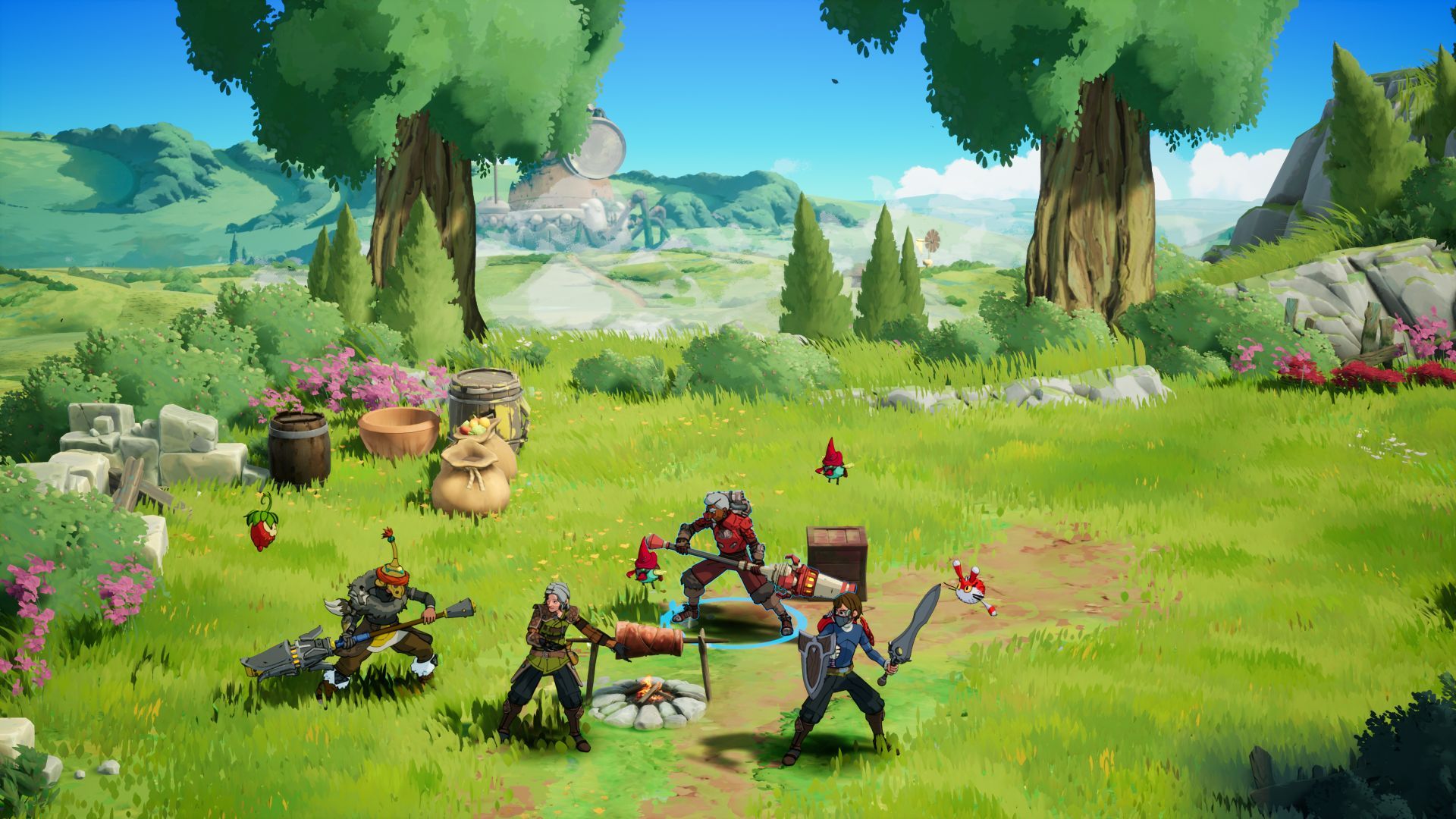
He continues, “From a gameplay perspective, we made sure that Light Attacks and Heavy Attacks can be used interchangeably no matter which button you use first. If you hit a button, you’re going to do something cool no matter your skill level. Once you find button combinations or moves that you like doing, you will naturally start forming strategies around them.”
Torres closes with, “It’s important to reward you through exploration and discovery, and the combat system is designed with that in mind. Umbra, for example, provides abilities that amplify your combat to do things that aren’t normally possible. Maybe it’s something that holds an enemy in place, something that makes juggling easier, or maybe it’s an Umbra that fires a long-range projectile. Figuring out what each ability does is part of the fun and makes combat feel unique and expansive.”
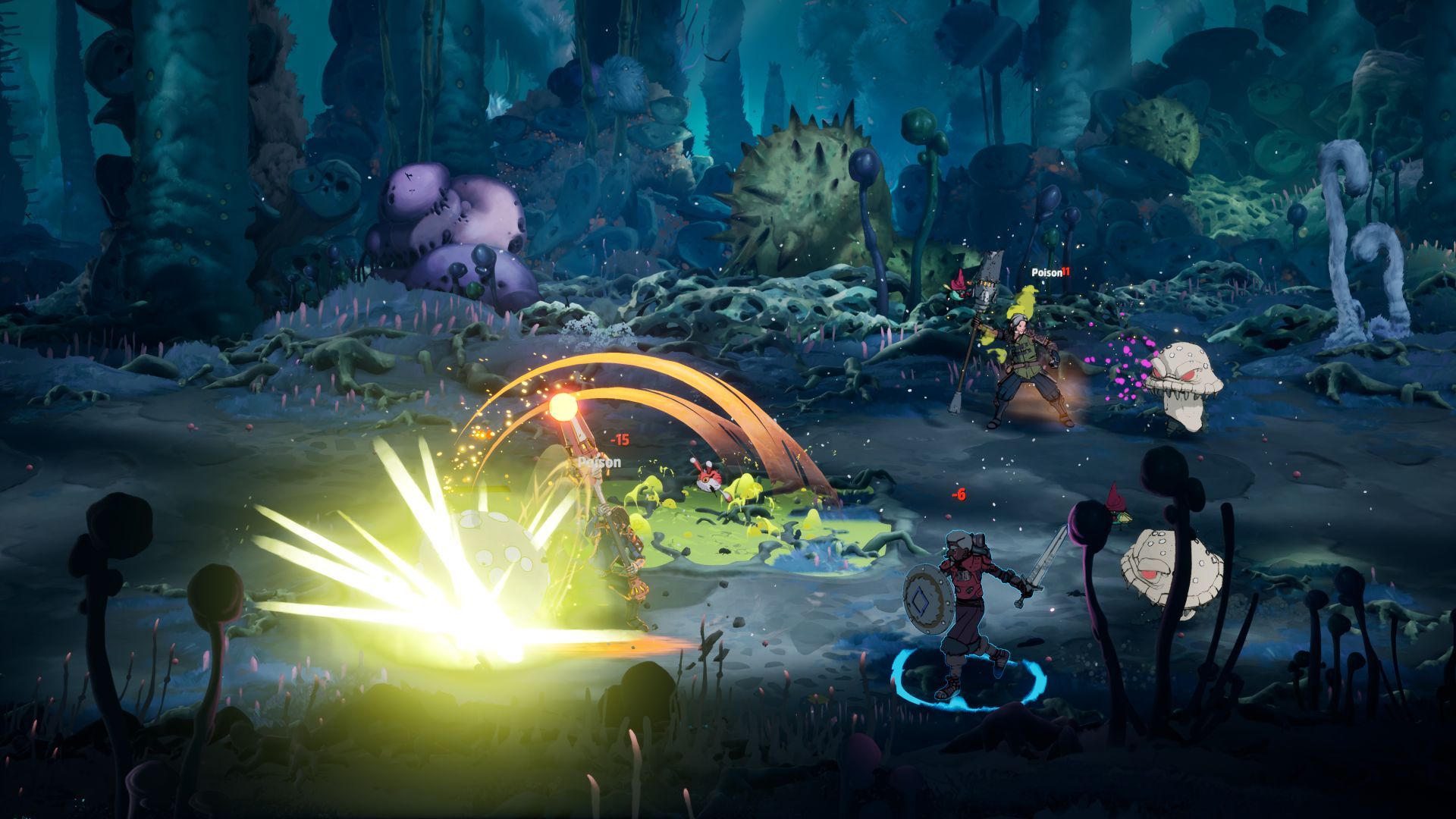
Adventure Together
I know I just said combat was fun, but don’t be fooled into thinking fun means easy, or that the game’s cute little enemy soldiers aren’t dangerous. Oh sure, you can power through one or two of them at a time, but when you’re trying to defend an objective, like a wagon, and there is half a dozen or more enemies on the battlefield, it can get overwhelming. The big boss battles, even more so. That’s where having a trusty companion comes in handy, and Towerborne achieves this in the form of Umbra. I asked Jorgensen about them since they feel like such an important part of the game. “The Umbra are small spirit beings, each with their own motivations and personalities. In battle they provide you aid by adding stats and abilities to your combat kit,” Jorgensen states. “One may call down spirit energy to smash the ground in front of you with area damage and another may project blistering damage across the screen. You need to seek them out by exploring the world map and in doing so, you will assemble several of them, then choose which will make the best addition to your loadout for the coming battle.”
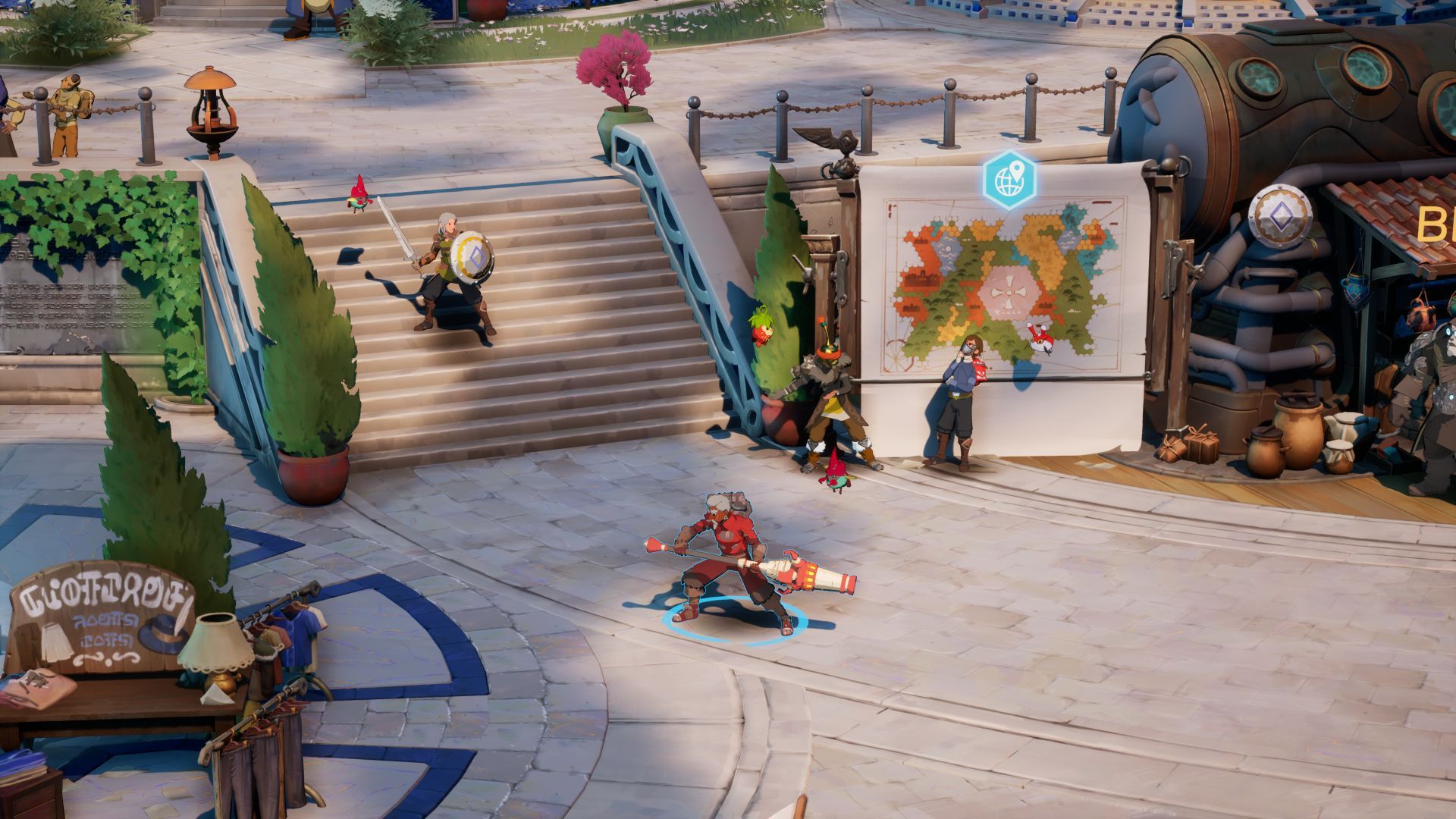
Home Sweet Home
The Belfry is a hub where you will link up with friends and companions to plan your next adventure, but it’s also home to several interesting non-player characters. I met several of them in my limited playtime but didn’t have the opportunity to learn much about them. I asked Jorgensen if he could share any details about a few of the more popular ones you’ll interact with regularly. “The characters of Towerborne are intended to be exclusive to this particular unfolding storyline and will help give you focus, motivation, and context in the world,” he mentions. “The stalwart Paloma who pulls you back from the Ebb into new life again; Krafft, the no-nonsense military commander; Courage, an Umbra spirit, who will teach you how to use your own fighting spirit. Bumble and Blundt build masterpiece weapons and gear, and Ryx, an Ace who’s died one too many times, intimately understands the spirits of the Ebb, just to name a few.”
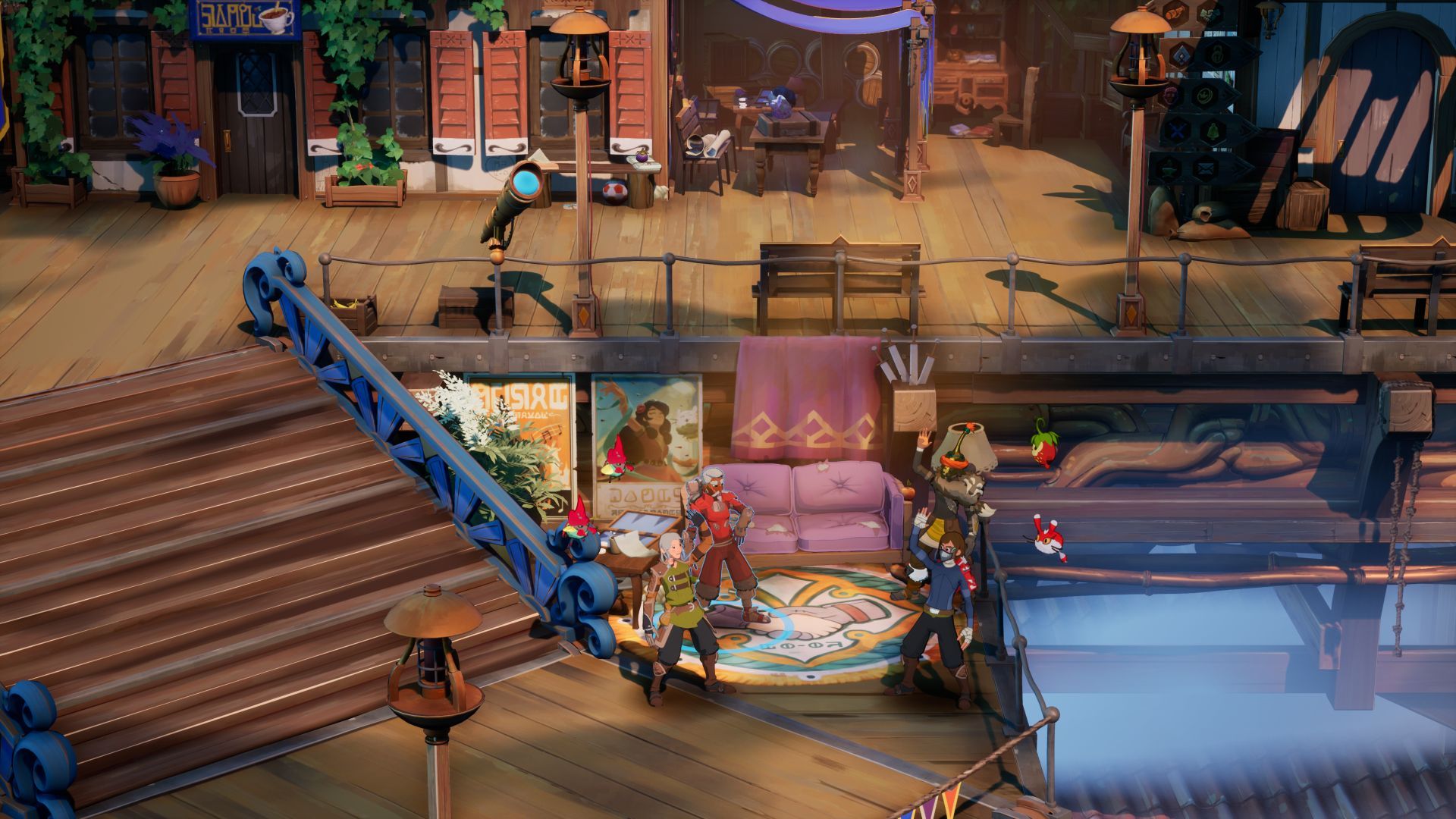
Cartography – the Art of Making and Using Maps
I love maps and charts in general, so map functionality is something I always notice in games I play. Towerborne’s map is not only functional and easy to use, but it’s also just as beautiful as the game and an important element of the adventure. I express my adoration on the brilliant map design with Jorgensen.
The map is designed to be a candy shop full of tasty treats for you to enjoy.
“The map is your way of exploring the world of Towerborne. You will battle out from the safety of the Belfry, hex by hex into the wilds to encounter discovery, story, enemy cluster, boss missions and more,” he states. “You will find chests of precious items, seek out Umbra spirits, and unlock pathways to more dangerous areas through Danger License missions. The map is designed to be a candy shop full of tasty treats for you to enjoy.”

From the Makers of Banner Saga
Towerborne is being developed by Stoic, the studio best known for their award-winning tactical role-playing game series, Banner Saga. Towerborne plays completely differently yet shares some subtle parallels. “The largest similarity is the base visual target both share, which is the look of an animated feature film. In the early days of development, the game also was much more of a left to right layout for combat, like Banner Saga travel scenes, but now it’s got a lot more movement and directions to engage with. It also used to be completely 2D, like Banner Saga, but we quickly pivoted to lean into what the Unreal Engine does well, which is 3D,” Jorgensen describes. “So now we get a similar look with a cel shader on the characters and hand painted environments for them to exist on. It has wonderfully designed worldbuilding and characters and is far more optimistic and uplifting than Banner Saga.”
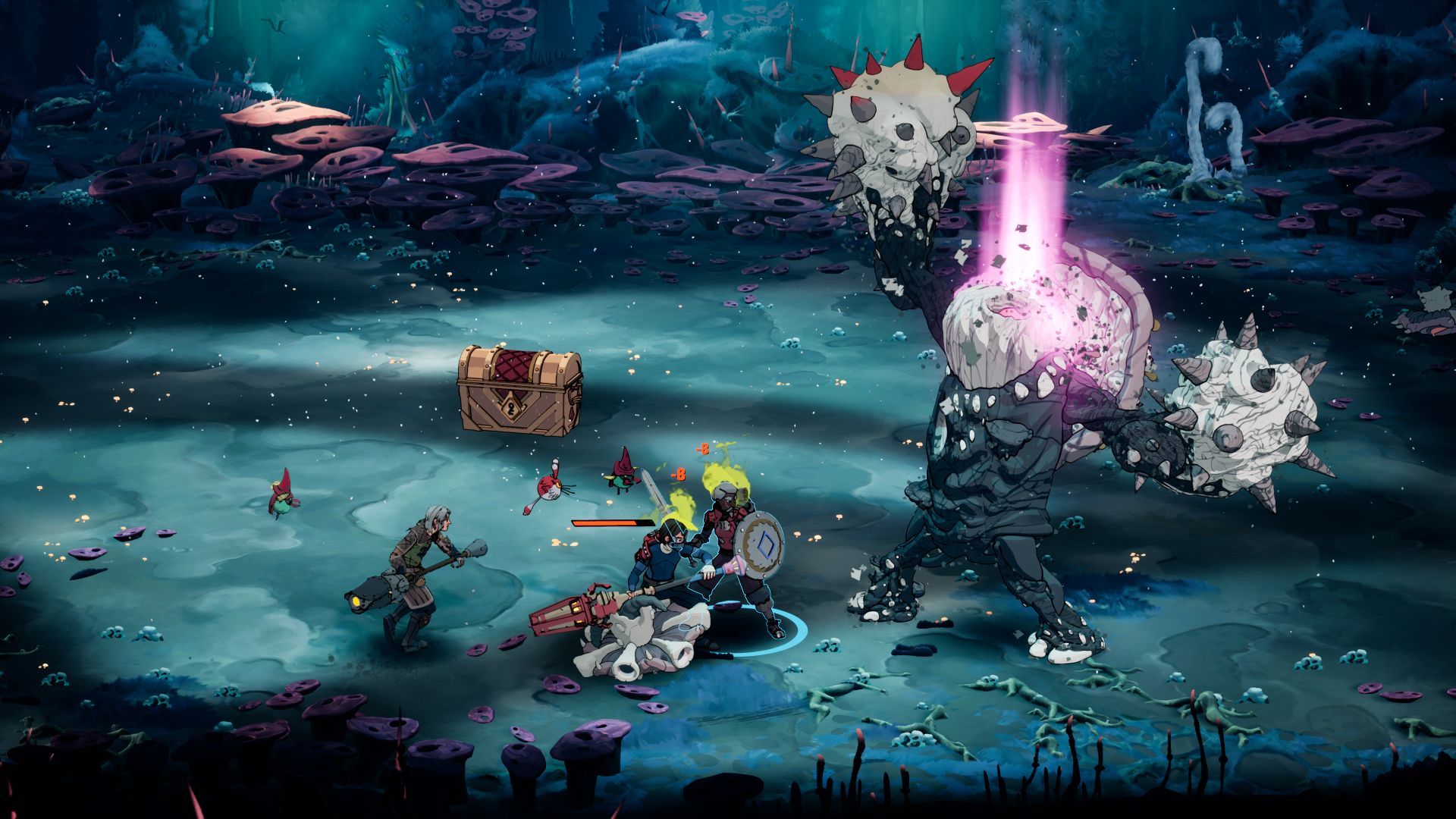
Conclusion
Towerborne reminds me of a few games I’ve played recently, including Tunic, Planet of Lana, Ori and the Will of the Wisps, and Immortals Fenyx Rising – NOT because they are necessarily similar in gameplay, rather, because they are just beautiful, and fun, and everything you want in a great game. Towerborne is all of these things!
“With Towerborne we really wanted to lean more into a fast-paced combat-based game that was accessible enough to play with your kids but didn’t talk down to adults either. We felt that a brawler style battle system was a great fit as a base that we could then twist into something larger and more modern to excite the current gaming community,” Jorgensen says. “We coupled this base with deep ARPG mechanics, a cool loot system, Stoic worldbuilding, and all wrapped up in a persistent world. We’re adding a lot of new to the genre, but the secret sauce is the world map which is also something players will find new and refreshing.”
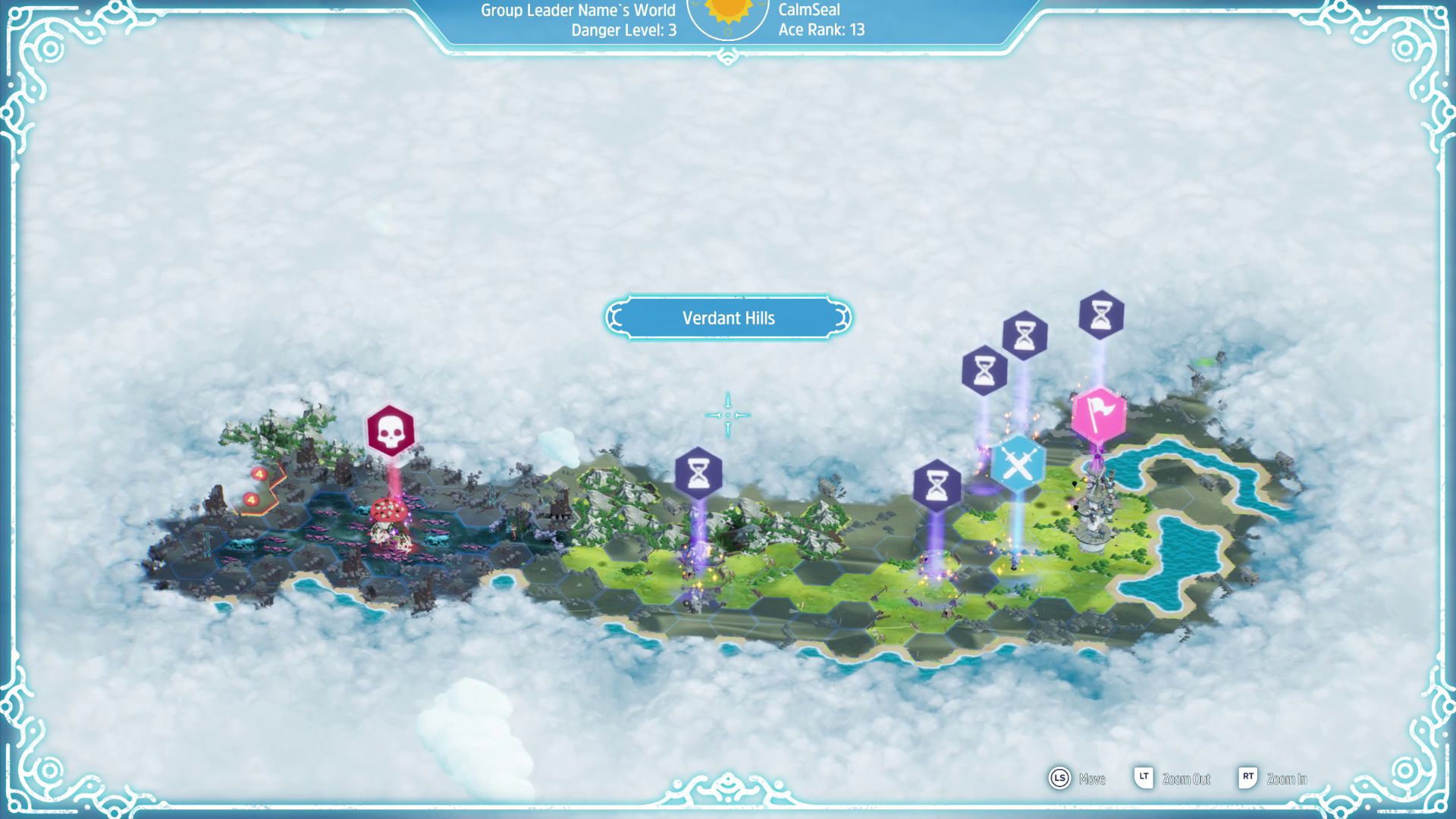
Before letting Jorgensen go, so he could focus on gamescom and sharing Towerborne with the fans, I had one personal parting question about games he’s currently playing, which I always find interesting to hear what game developers are playing. “When I have time to actually play a game these days it’s Pillars of Eternity or Songs of Conquest on the PC,” he says. “And the last two I played and finished are the Untitled Goose Game and It Takes Two with my son. Oh, and Clash Royale on the phone of course.”

